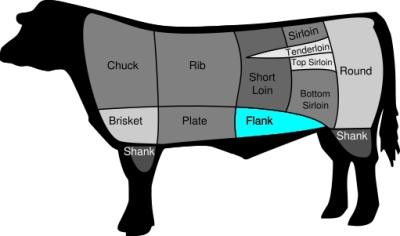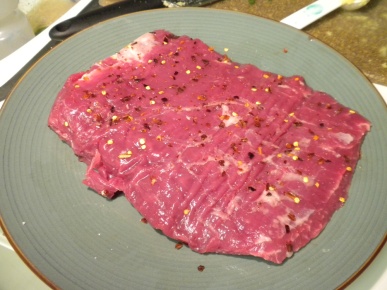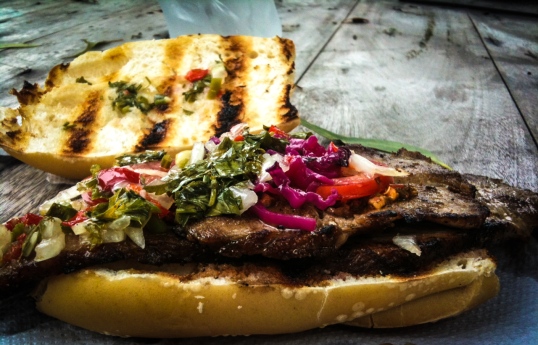Today’s primal cut of conversation is the flank. The flank can be found below the loin. and is the abdominal muscle of the animal. In the United States, this cut is regularly marinated prior to cook because it it a tougher, but flavorful primal cut. It is regularly grilled, but can also be braised or cooked using moist heat.
The flank is the only primal cut in the entire animal that is an entire muscle. Flank steak fibers run across the entire length of the cut and is regularly cut against the grain to maximize tenderness. There are other ways that people tend to tenderize this cut of beef. Along with marinating, the cut can be butterflied, a cutting term where the cut is directly cut in half through the middle, as well as pounded.
There are no bones in this primal cut, which lends itself to some of Argentina’s favorite dishes.
Here in Argentina, flank steak is known as vacio and is regularly served in Argentina asados. The vacio is cut by butchers here in Argentina with the thin layer of fat on the outside. The asador, or master grill man, will place vacio fat side down. With all those nice coals beneath it, the layer of fat becomes crispy and the meat inside soaks up all this juice and flavor, making it extra delicious.
Vacio can be eaten by itself, but is also a favorite for what many Argentines call vaciopan. With vacio meaning flank, and pan meaning bread, it is pretty easy to put the two together. Vaciopan is a big fat steak sandwich. These bad boys can be eaten by themselves, but they are also regularly given a nice spoonful of chimichurri, lettuce and tomato. This is as close to a salad as you’re going to get when eating meat in Argentina.









































